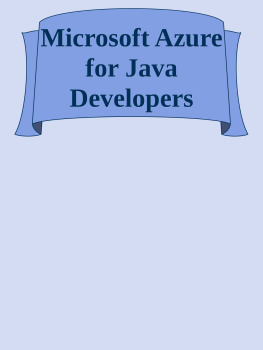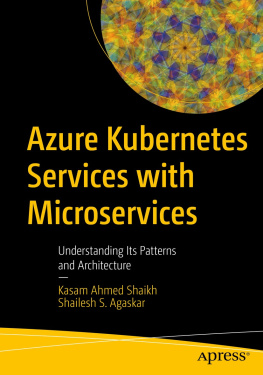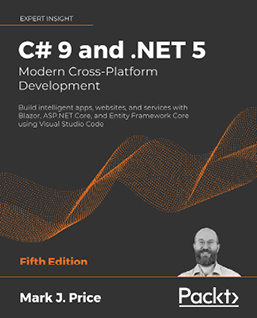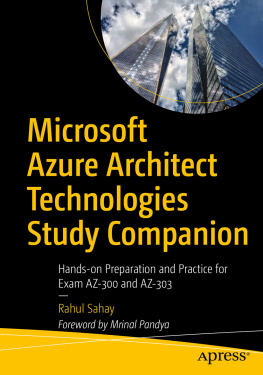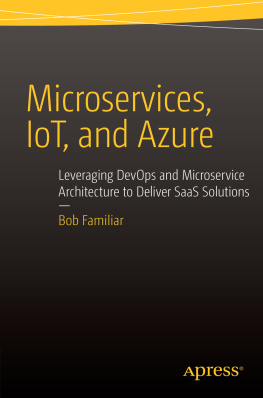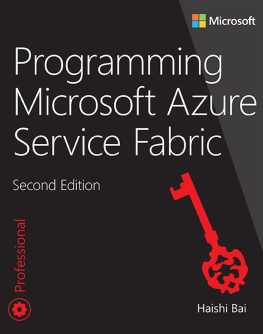Namit Tanasseri - Microservices with Azure
Here you can read online Namit Tanasseri - Microservices with Azure full text of the book (entire story) in english for free. Download pdf and epub, get meaning, cover and reviews about this ebook. year: 2017, publisher: Packt Publishing, genre: Romance novel. Description of the work, (preface) as well as reviews are available. Best literature library LitArk.com created for fans of good reading and offers a wide selection of genres:
Romance novel
Science fiction
Adventure
Detective
Science
History
Home and family
Prose
Art
Politics
Computer
Non-fiction
Religion
Business
Children
Humor
Choose a favorite category and find really read worthwhile books. Enjoy immersion in the world of imagination, feel the emotions of the characters or learn something new for yourself, make an fascinating discovery.
- Book:Microservices with Azure
- Author:
- Publisher:Packt Publishing
- Genre:
- Year:2017
- Rating:4 / 5
- Favourites:Add to favourites
- Your mark:
Microservices with Azure: summary, description and annotation
We offer to read an annotation, description, summary or preface (depends on what the author of the book "Microservices with Azure" wrote himself). If you haven't found the necessary information about the book — write in the comments, we will try to find it.
Architect enterprise-grade, Microservice-based solutions using Microsoft Azure Service Fabric.
About This Book- Explore architectural patterns for building modern day Microservice-based systems
- Learn about Microsoft Service Fabric as a platform to host distributed Microservices
- Discover multiple options for hosting Microservices on heterogeneous, cross-platform environments
- Learn to configure Azure Service Fabric clusters for enterprise-grade service deployments
The book is aimed at IT architects, system administrators, and DevOps engineers who have a basic knowledge of the Microsoft Azure platform and are working on, or are curious about, the concepts of Microservices and Microservice architecture.
What You Will Learn- Understand the basics of Microservices and how Microsoft Azure fits into the equation
- Master Azure Service Fabric architecture and services
- Explore Azure Service Fabric application programming models
- Comprehensive study of various architecture patterns for building enterprise-grade Microservices
- Manage and deploy Microservices on Azure Service Fabric
- An insight into the future of Microservices with containers and serverless computing
Microsoft Azure is rapidly evolving and is widely used as a platform on which you can build Microservices that can be deployed on-premise and on-cloud heterogeneous environments through Microsoft Azure Service Fabric. This book will help you understand the concepts of Microservice application architecture and build highly maintainable and scalable enterprise-grade applications using the various services in Microsoft Azure Service Fabric. We will begin by understanding the intricacies of the Microservices architecture and its advantages over the monolithic architecture and Service Oriented Architecture (SOA) principles. We will present various scenarios where Microservices should be used and walk you through the architectures of Microservice-based applications. Next, you will take an in-depth look at Microsoft Azure Service Fabric, which is the best-in-class platform for building Microservices. You will explore how to develop and deploy sample applications on Microsoft Azure Service Fabric to gain a thorough understanding of it.
Building Microservice-based application is complicated. Therefore, we will take you through several design patterns that solve the various challenges associated with realizing the Microservices architecture in enterprise applications. Each pattern will be clearly illustrated with examples that you can keep referring to when designing applications.
Finally, you will be introduced to advanced topics such as Serverless computing and DevOps using Service Fabric, to help you undertake your next venture with confidence.
Style and approachThis book introduces its readers to the concept of Microservices and Microsoft Azure Service Fabric as a distributed platform to host enterprise-grade Microservices. It then addresses common architectural challenges associated with the Microservice architecture, using proven architectural patterns.
Namit Tanasseri: author's other books
Who wrote Microservices with Azure? Find out the surname, the name of the author of the book and a list of all author's works by series.



